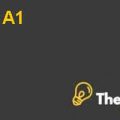
Question Number 1:
What are the advantages of stock appreciation right?
The stock appreciation rights (SAR) are given by the company owners to share some of the equity profits with the employees and directors that are giving their contribution toward the growth of the company. This practice is followed in the whole world to align the interest of shareholders to the interest of management and directors to increase the performance of the company. It has many advantages that are given below.
- The first advantage of the SAR is to align the interest of the shareholders and the management, the alignment will secure the interest of the shareholders. Due to SAR the company performance increases due to the best performance of the management to earn a higher amount of the bonus.The SAR is based upon the profitability and the profitability will increase the wealth of the shareholders and the management as well.
- Less annual cash outflow, the company is required to pay wages on a monthly basis, through this offer companies pay less amount as the salaries and the remaining amount is deferred for many years that is based on the performance of the company profitability.
- Then future cash flow is based on profitability, if the company has earned below target profitability, then the outflow is lower and if the profitability is high then the company has cash to pay offhigher SAR expenses.
What are the disadvantages of stock appreciation right?
There are certain disadvantages of such SAR offer to company as well as employees and those disadvantages are explained below.
- The first disadvantage for the company is the window dressing. The bonus is purely based upon the profitability and employee may window dress sales to increase the profitability and their personal gains. This offer gives birth to frauds in the organization.
- In case of the high profitability company has to pay a huge amount of cash in the exercise year for the rights therefore it may affect the company cash flows in the year of exercise of rights.
- It is not a form of equity therefore employees do not have ownership rights in the company. It is better for the employees to buy equity shares from market to earn the capital gain and dividends from those shares rather than going toward such a lengthy process.
- The employees have to wait for the years to have cash (5 years in this case), the employees need the cash for the transaction, precautionary and speculative motive therefore it is better for them to have salary now rather than after 5 years (maximum time period).
- The right cannot be exercised before 5 years expire and in case of shares the holder has an option to sell at any time and realize the gain if there is a gain in that case.
Do they create the same incentives as equity ownership?
In the case of incentive after meeting certain condition the incentive for both equity holder and the right holder. The employee gets equal amount of increase in the stock price if certain conditions are fulfilled (EBITDA in this case). The question here is the equality of the incentive that is defined afterwards in this part of the report.
The incentive is based upon the difference between the current stock price and future stock price and the method to price the stock is to multiply the EBITDA with 6.5 and then it will become the total value of the company.
There is only one way in which both equity and rights holders returns are same when stock exchange does follow the same rule to value the method of and no dividend is paid for five years only then both incentives are same otherwise the incentives are different.Talent Partners Case Solution
Question number 2:
Evaluate the design of the plan.
The plan is that the optionis divided into three tranches and the tranche one has 25% of total options, tranche two has 55% and tranche 3 has 20% of the total options. The exercise prices are different for all those tranches (Exhibit 1) and the share option number is also different. The bonus is based upon the difference between the exercise price and the actual price. The exercise price is given, but the stock price is derived through EBITDA multiple valuation method. The multiple is 6.5x in this case...............
This is just a sample partial case solution. Please place the order on the website to order your own originally done case solution.













